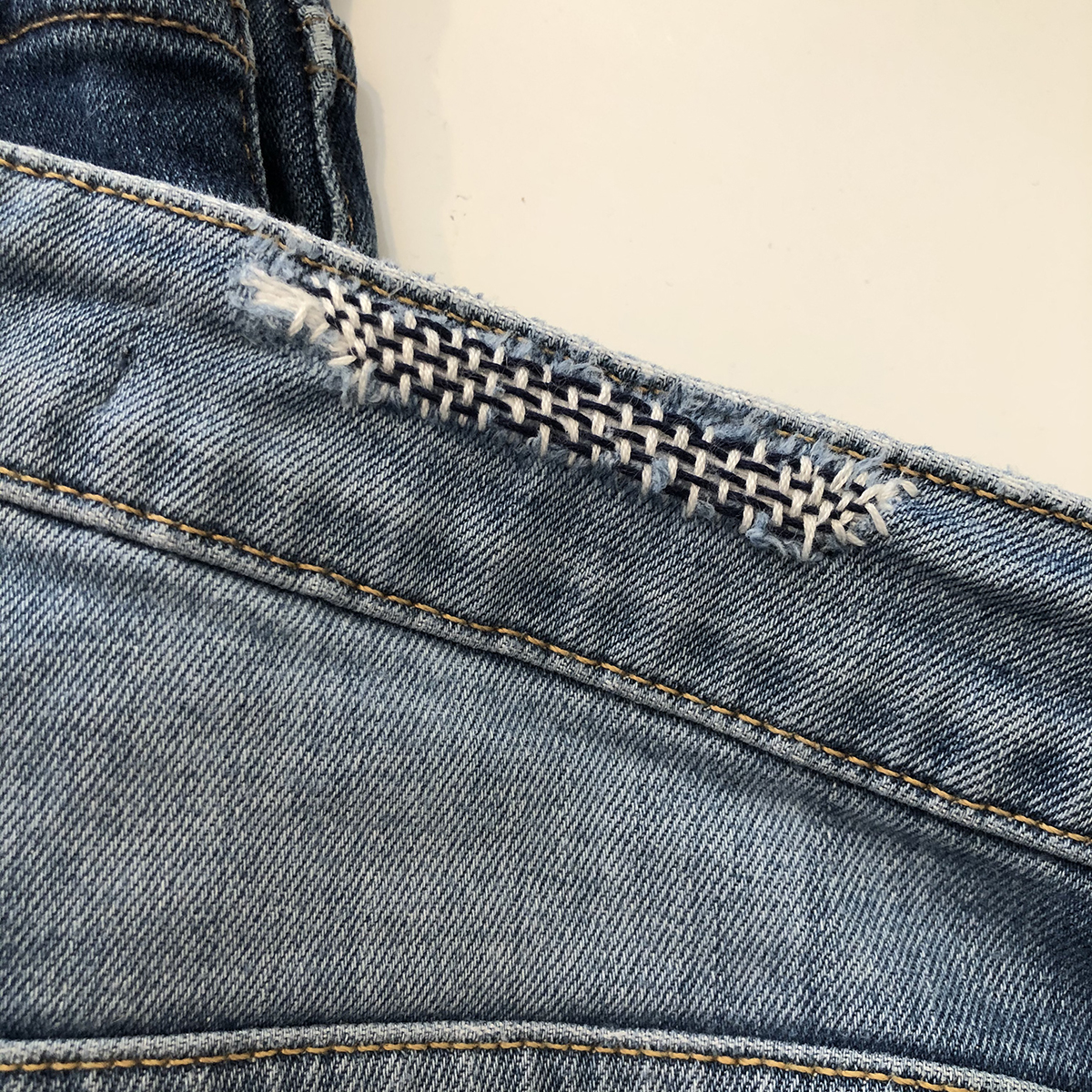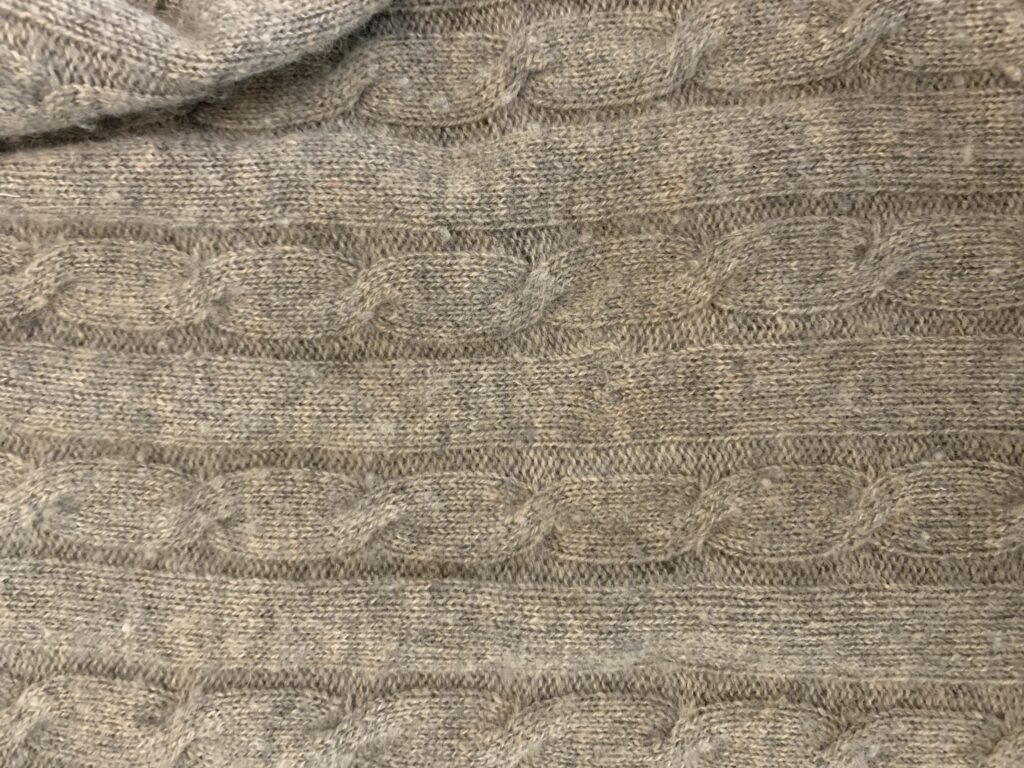When I was a kid, my mom bought everything about 10 sizes too big – “you’ll grow into it!” she’d insist over my groans, and I would head off to school with about a foot of denim rolled at my ankles.
I really am only exaggerating a little.
It may have been an annoyance then, but as I’ve gotten older I’ve found the value in making things last as long as they possibly can, and have realized that that habit was passed down not just by my mother, but from hers who grew up during the depression, and my grandmother’s mother who grew up at the turn of the (last) century, and likely for years before that.
Mothers have been following the “mend and make do” adage for generations.
You’ve likely rolled your eyes after hearing someone older say, “they just don’t make things like they used to!”, and admittedly, there are many things we have today that are better than what we had a generation ago: clothing is not one of those things.
Fast fashion is killing the environment. And no, that’s not as outrageous as it sounds when you break it down:
- North Americans send over 10 million tonnes of clothing to the landfill every year, 95% of which could be reused or recycled
- One trillion kilowatt hours are used by the global textiles industry every year, which amounts to roughly 10% of the world’s global carbon impact
- It takes 2,650L of water to produce one cotton t-shirt, which is basically the equivalent of 28 baths
- It is estimated 17-20% of total industrial water pollution comes from textile dyeing and treatment
Personally, I’ve always been someone who washed my stuff in cold and hung it to dry. I take care of my clothes and that’s why, at 30(+) I still have things I wore at 14 that are in great shape. Unfortunately, the same cannot be said for some of what I’ve bought the past few years, much of which has barely lasted a season. And it’s not about the quality, or, at least not the price. As I’ve gotten older I’ve tried to buy better quality items in hopes that they will last, but really I have found that rarely do price and quality have any clear connection. A lot of the time, a shirt I’ve spent $60 on falls apart faster than one I’ve bought for $10.
So, what do we do?
For my part, being a vintage fan, I think there are 2 great ways to go – buying vintage clothing and mending what you already have.
This week we’ll focus on mending.
Don’t worry, I’m not much of a sewer myself, so I’m going to do a brief run-down of how to determine what can be mended and how, and then maybe at a later date I’ll get someone more skilled to show how you can really step it up a notch.
The first thing you need to do is identify what needs to be done.
What Needs Fixin’
Sounds obvious, but I don’t just mean find where the tear is. Think about what you really need to have repaired, and why. Got a hole in your jeans? Does it matter? Some people pay extra for that. Got a hole in a blouse? Do you wear it under a sweater or jacket? Maybe a quick fix to stop it from getting worse is enough. Is it something that will definitely be seen? A better quality repair is needed. Sure that it’s beyond repair? Think about whether someone else would feel the same (can you donate it to a thrift store, or a theatre company?), whether you can reuse it in another way (cut up could it make a cute headband? a pillow?) or how you can recycle it (like through our Value Village FunDrive).
On The Mend
Once you’ve determined the spot that needs fixing, you need to figure out what kind of fix it needs. Are you going to be adding material to create a patch? Stitching to repair a hem or a seam? Doing an invisible mend by darning? To determine what path to choose you need to know, a. the end result you want, and, b. the material you are working with. So let’s break some of that down.
mending silk

Silk is a delicate, natural fibre harvested from the cocoons of silk worms. It’s breathable, beautiful, and notoriously difficult to repair. But if you find yourself with some damaged silk, don’t despair. While the chance of a totally invisible repair is slim, fusible fabric placed on the inside of the garment can save many pieces, like the vintage lingerie in this article. Fusible interfacing is not a difficult thing to use but can still be an easy thing to mess up: make sure you read the instructions twice, watch the temperature of your iron, and take your time so you don’t make the damage even worse. If you have a steady hand and some sewing experience, you can try to take a hidden piece of fabric from your garment and patch it with the same, but don’t try this if you’re not a sewer, it’s finicky work. Along with rips or tears, snags are a common problem with silk: this post gives a detailed breakdown of how to fix them, and why you should do that before it turns into something bigger, like a hole.
MENDING denim

Pure denim is a very sturdy material, created in the mid-19th century for use as workwear. But most of the denim we get today is a blend, often containing lycra or some other flexible material to make them stretchy and form-fitting and that has the unfortunate side effect of being more prone to damage. This article shares several ways you can repair your denim, whether you want to try to stitch an invisible seam or play up the patch with some sashiko embroidery.
mending knits

You’ve likely heard someone talk about “darning socks” but if you’re under 40, there’s a good chance you don’t have a clear vision of what that really is. Out of all the clothing I buy socks are easily what I have to replace the most, and it’s frustrating because it feels like I need to buy them every year. I’m a bit of a hoarder when it comes to my favourite clothes, and as nearly all my socks have some kind of strange pattern or design on them, I really do hold on to them until there’s nothing left (some are basically anklets by the time I throw them out). But back when our socks were a little bulkier and knit it was not uncommon to patch up those holes to make them last another season. This site explains how to darn, fix a tear with felted wool and mend with thread – great advice for anything from socks to sweaters.
mending cashmere

Like silk, cashmere is delicate and expensive, and until recently I would have thought there wasn’t a good way to fix it – then I came across this YouTube tutorial on how to repair cashmere with fusing powder and chopped up fibres from elsewhere on the garment. Pretty cool stuff.
***
There are countless other fabrics out there but I think this range will give you a good idea of the basic mending techniques available, and what types of materials they work best on. Basically you can patch it – with either an invisible, or a visible, decorative patch – or stitch it – with an invisible stitch or embroidery. I have a pile of mending I’ve been meaning to get to for ages, so when I finally pull it out I’ll be sure to record my progress, regardless of how it goes.


















